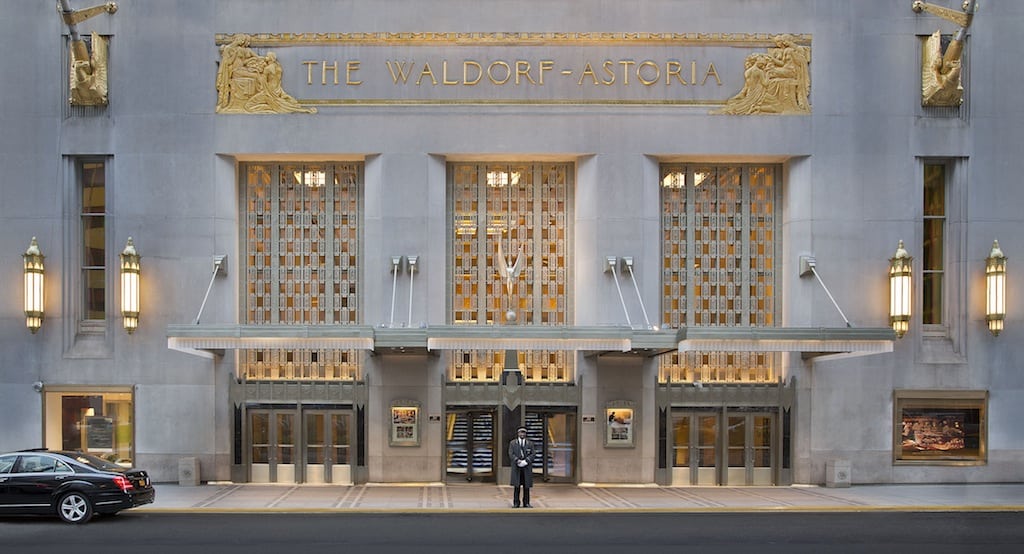Skift Take
Environmental and socially responsible initiatives aren't just effective at cutting costs and reducing waste. Increasingly sophisticated guests are now making decisions based on the consciousness and actions of brands.
New York’s Waldorf Astoria is known for its historic significance and old-school luxury, but behind its well-maintained decor is an innovative approach to environmental and social responsibility.
Paper hats, headless pineapples, and a partnership with a local church are the unique components of the kitchen’s sustainable initiatives.
For example, the kitchen — headed by culinary director David Garcelon — started ordering headless pineapples, which fit eight pieces instead of six regular pineapples per a shipping carton. In addition to a decreased carbon footprint from the reduced weight and fuel needed to transport the boxes, the kitchen also decreased its fresh waste by 1.1 ton throughout the year.
Another simple swap was from paper chef’s hats to a more durable and compostable material. Chefs can use the hats for one week instead of one day, reducing waste.
These environmental initiatives work in tandem with the property’s social action.
The Waldorf Astoria packages an estimated 14,000 box lunches for conventions and meeting per year, of which about 5 percent – or 800 boxes – go unused. The Waldorf Astoria donates these boxed lunches to St. Bart’s Episcopal Church located across the street.
The property was recognized this week by the Hotel Association of New York City, in partnership with sustainability consultancy Great Forest, for its commitment to environmental sustainability and social responsibility initiatives.
However, Waldorf Astoria is in no way the only property investing more time and energy towards environmentally and socially responsibility initiatives.
“More hotels are realizing that they can save big by reducing their waste costs or being more energy efficient. The savings can add up significantly, from a few hundred dollars to tens of thousands of dollars a month,” explains Magdalene Sim, the spokesperson for Great Forest.
The New York Hilton Midtown is one of the city’s largest hotels, which means incremental changes to in-room products can have a substantial impact over time. Energy-efficient lighting, thermostat sensors, low-flush toilets are a few of components of the hotel’s 1,981 that help save reduce energy spend over the long-term.
Another way in which hotels reduce waste is by donating soap.
More than 800 hotels including properties branded Holiday Inn Express, Embassy Suites, DoubleTree, and Courtyard Inn & Suites donate partially used soap to organizations like the Global Soap Project and Clean the World. The soap is sorted, cleaned, and then redistributed to international regions that lack access to sanitation supplies.
Many properties’ success; however, is a result of the corporate policy of the brand’s parent company.
“There is a framework that is given to the hotels and programs so they can activate at the local level. Every hotel would decide who they want to participate in their own community,”explains Ronen Nissenbaum, managing director of the Waldorf Astoria.
“Hilton gives them the game plan of what needs to be and then each hotel follows its own path around the world.”
Although Hilton Worldwide has agreed to sell the hotel to China’s Anbang Insurance Group Co., it will continue managing the property, suggesting that there will be few or no changes to the property’s social and environmental responsibility initiatives.
Have a confidential tip for Skift? Get in touch
Tags: climate change, environment, hilton, sustainability
Photo credit: Entrance to the Waldorf Astoria in New York City. Waldorf Astoria Hotels & Resorts
